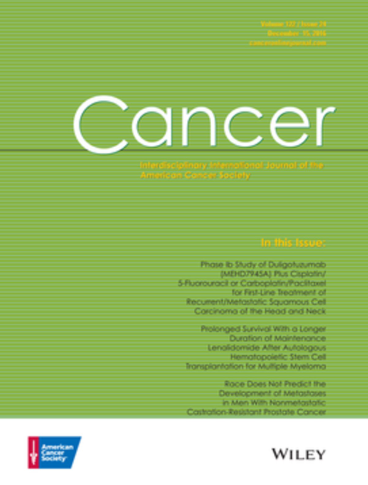Longitudinal trends in testicular volume z scores from puberty to adulthood, sperm quality, and paternity outcomes after childhood cancer
Abstract
Background
Childhood cancer therapy may cause subfertility. This study correlated cancer therapy exposures with testicular volumes from puberty to adulthood, spermatogenesis, and paternity outcomes in adulthood.
Methods
The study population comprised 255 male childhood cancer survivors (CCS) (survival ≥5 years, diagnosed in 1964–2000 at the Helsinki Children's Hospital) whose testicular volume was measured at ages 12 years (n = 38), 14 years (n = 57), 16 years (n = 63), 18 years (n = 105), and in adulthood (n = 43; median age, 27 years). Testicular volumes were converted to age-specific z scores. In addition, 92 CCS provided semen sample in adulthood (median age, 25.2 years); and paternity was evaluated through national register data (mean age at assessment, 37.6 years; n = 252).
Results
Compared with age-specific reference values, CCS generally exhibited low testicular volume z scores at ages 12–18 years. Testicular volume z scores in CCS treated exclusively with chemotherapy returned to the reference range in adulthood. In contrast, patients exposed to testicular radiation ≥1 gray (Gy) (median dose, 12 Gy) showed no late recovery in testicular size. Testicular radiation ≥1 Gy and a cyclophosphamide equivalent dose ≥12 g/m2 were identified as risk factors for azoospermia in adulthood. Patients exposed to testicular radiation ≥1 Gy and a cyclophosphamide equivalent dose ≥4 g/m2 had lower paternity rates.
Conclusions
Testicular volume growth after prolonged follow-up suggests a potential late recovery of spermatogenesis in CCS treated exclusively with chemotherapy. However, alkylating agents increased the risk of having prolonged azoospermia and nonpaternity. High-dose testicular radiation causes long-term depletion of spermatogonia and was the strongest risk factor for azoospermia and nonpaternity.


 求助内容:
求助内容: 应助结果提醒方式:
应助结果提醒方式:


